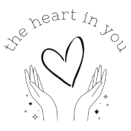Have you ever felt like you’re living the same frustrating situation over and over again? Maybe you always end up in jobs that drain you, relationships that leave you feeling unseen, or cycles of overwhelm that make life feel harder than it needs to be. If so, you’re not alone—and you’re not imagining things.
These experiences aren’t just random; they’re patterns—deeply ingrained ways of thinking, feeling, and reacting that shape our lives, often without us even realizing it.
What Are Patterns?
Patterns are like invisible tracks our minds and emotions run on. They’re the familiar ways we respond to life, based on past experiences, conditioning, and subconscious beliefs. Some patterns are helpful—like brushing your teeth every morning without thinking about it. Others? Not so much.
The tricky part is that because patterns are so familiar, they often feel normal—even when they’re holding us back.
How Patterns Shape Your Reality
Your patterns influence:
- Your thoughts: The way you talk to yourself, what you believe is possible, and how you interpret situations.
- Your emotions: The feelings you default to—whether that’s frustration, doubt, annoyance, or any other feeling.
- Your behaviors: The actions (or inactions) you take, often on autopilot.
For example, if you have a pattern of overwhelm, you might find yourself saying “There’s never enough time” or “I can’t handle all of this.” That belief fuels feelings of stress and panic, which then lead to behaviors like procrastination or burnout. The pattern continues, reinforcing itself. The pattern can also work the other way around. When something happens that brings up those physical feelings of stress, like an increased heart rate and shallower breathing, your go-to interpretation becomes “I can’t handle this problem, it’s too much for me.”
Breaking Free: Awareness Is the First Step
The good news? Patterns are not permanent. The moment you recognize a pattern, you create space to shift it.
A simple way to start:
- Notice your recurring struggles. What situations trigger the same emotional or mental response? No need to solve the issue — awareness alone is powerful.
- Get curious. Instead of judging yourself, ask: Is this reaction truly serving me? Is there another way to respond?
- Experiment with small shifts. If you always react with stress, what happens if you pause and take a deep breath first? If you always assume the worst, what happens if you challenge that assumption?
Your Patterns Are Not You
You are not your habits, your reactions, or your past experiences. Patterns may have shaped your life, but they don’t have to define your future.
In the next post, we’ll explore how to move from reacting automatically to choosing consciously, so you can start creating new, more empowering patterns.
In the meantime, take a moment to reflect: What’s one pattern you’ve noticed in your life? Let’s start bringing them into the light. ✨


